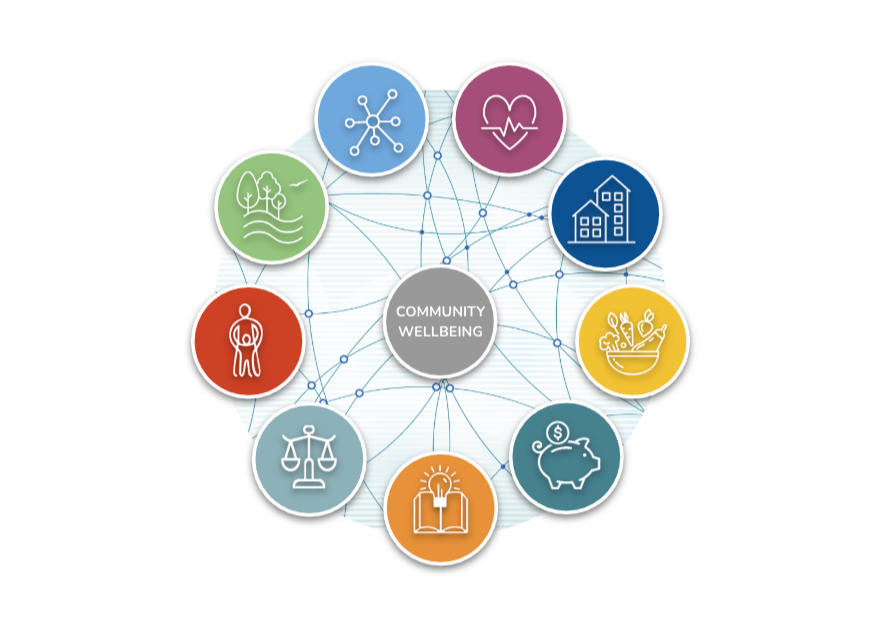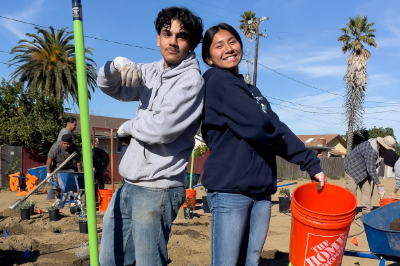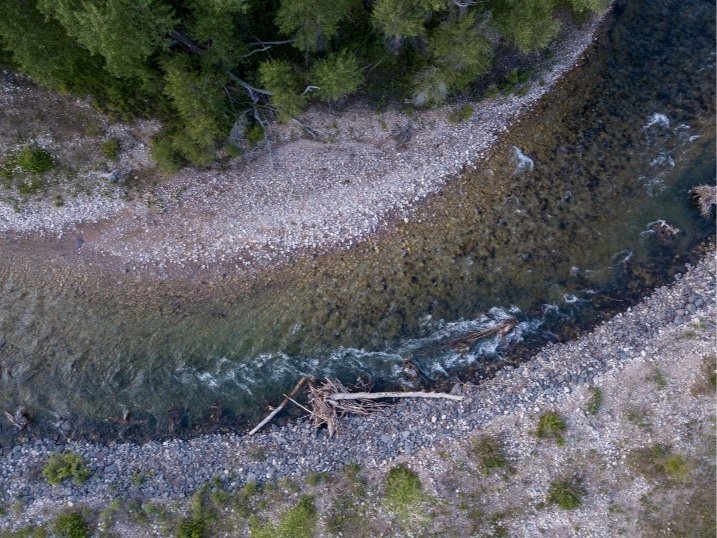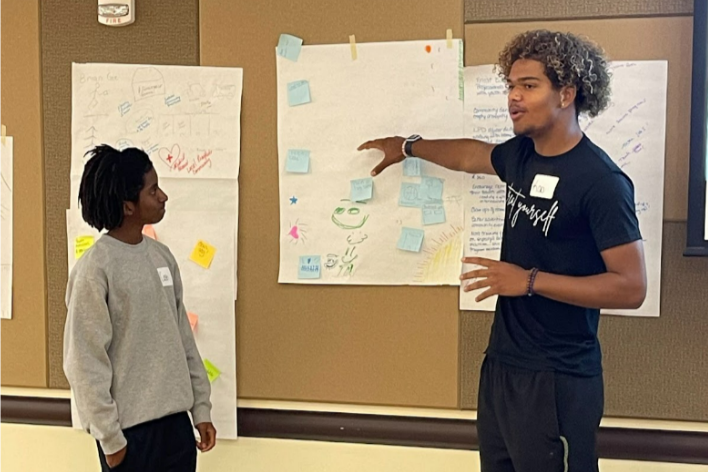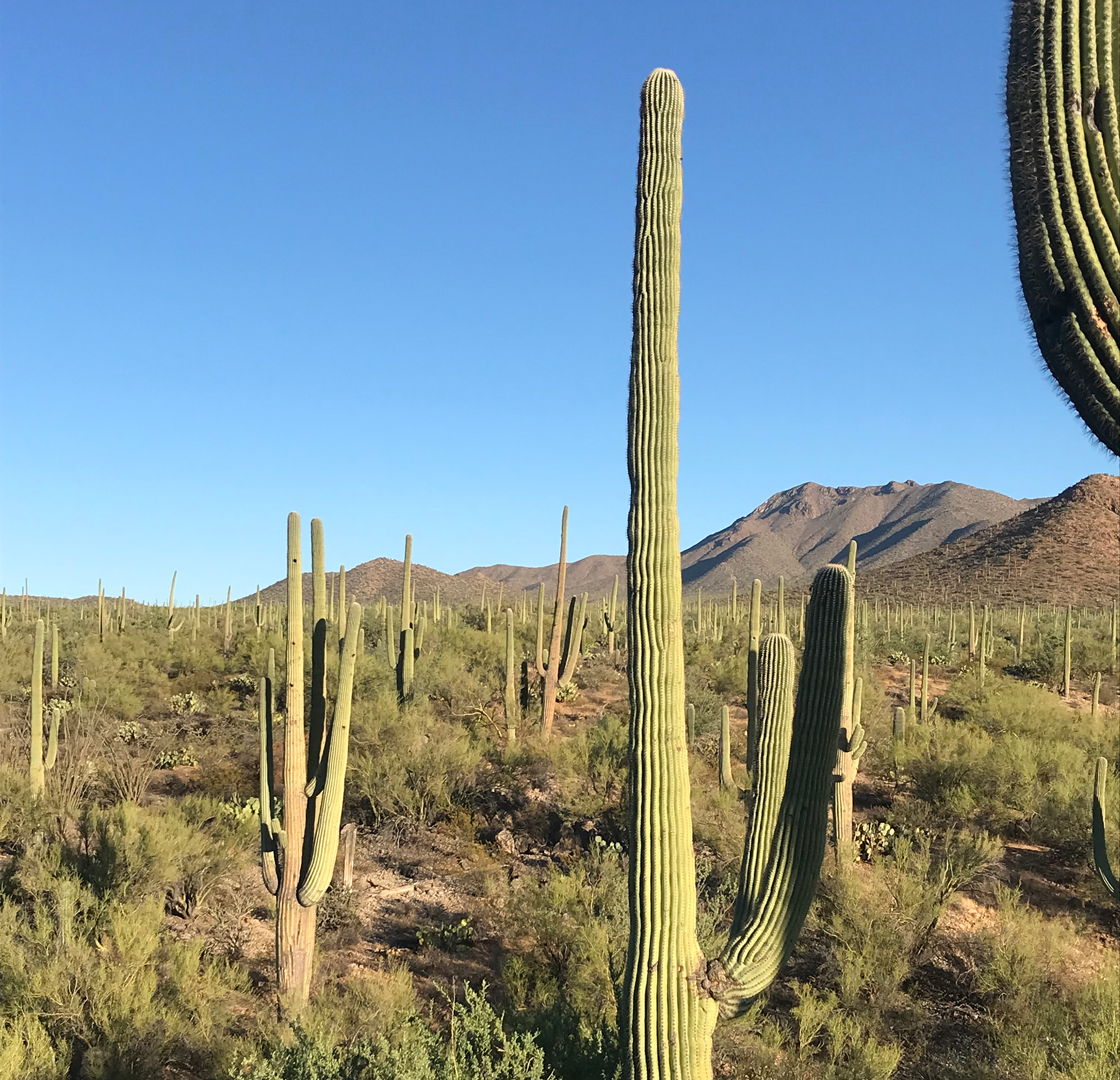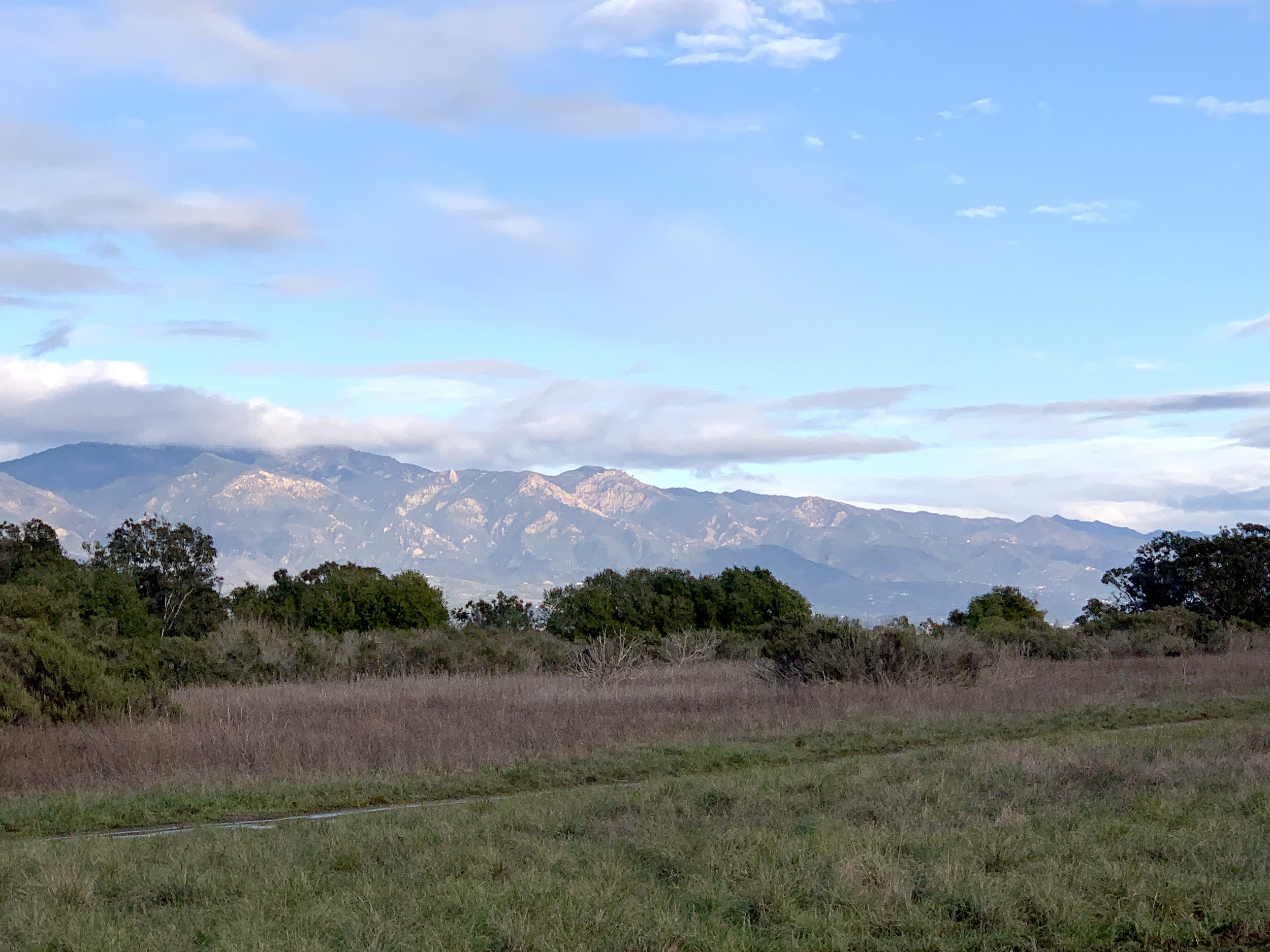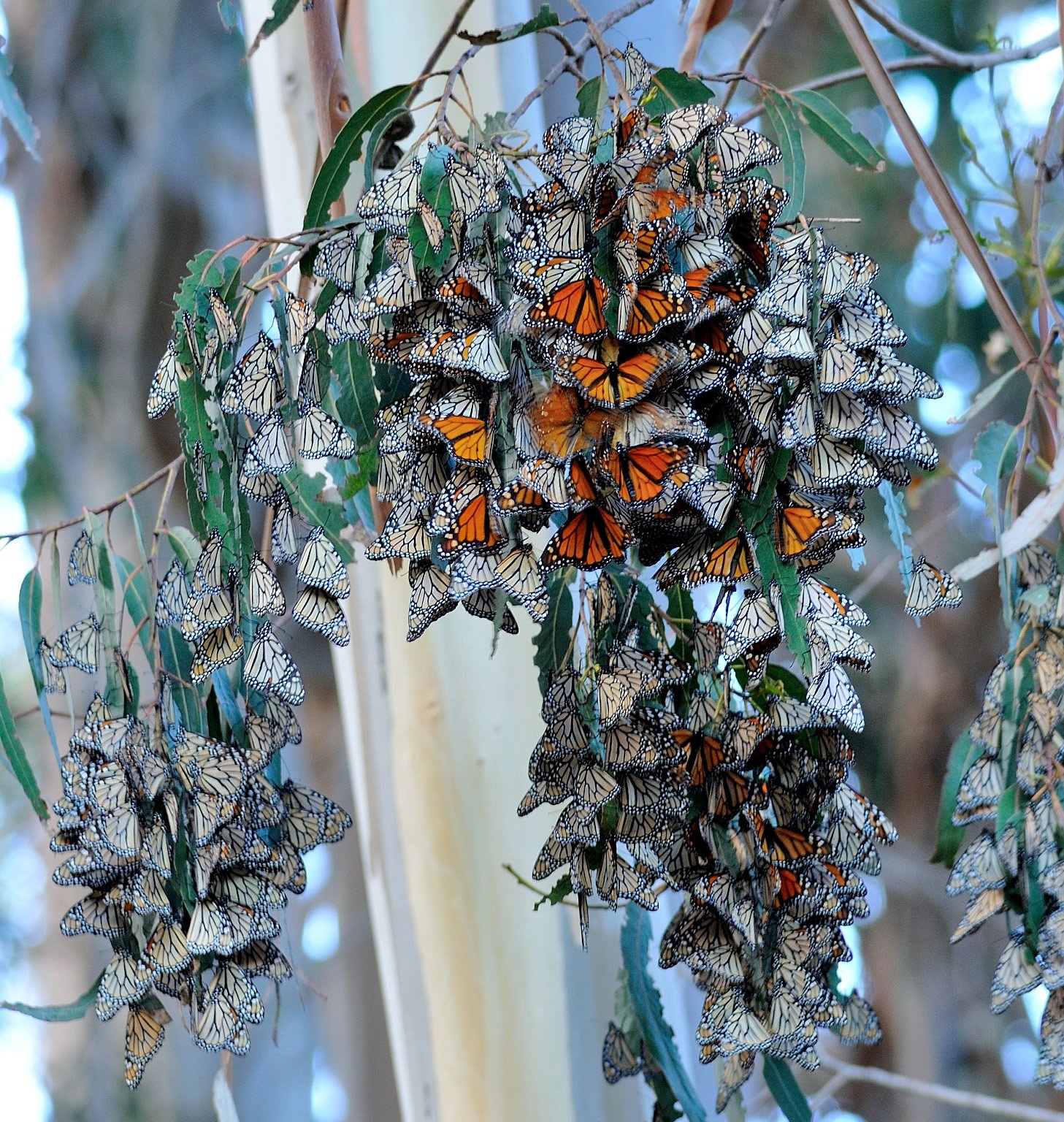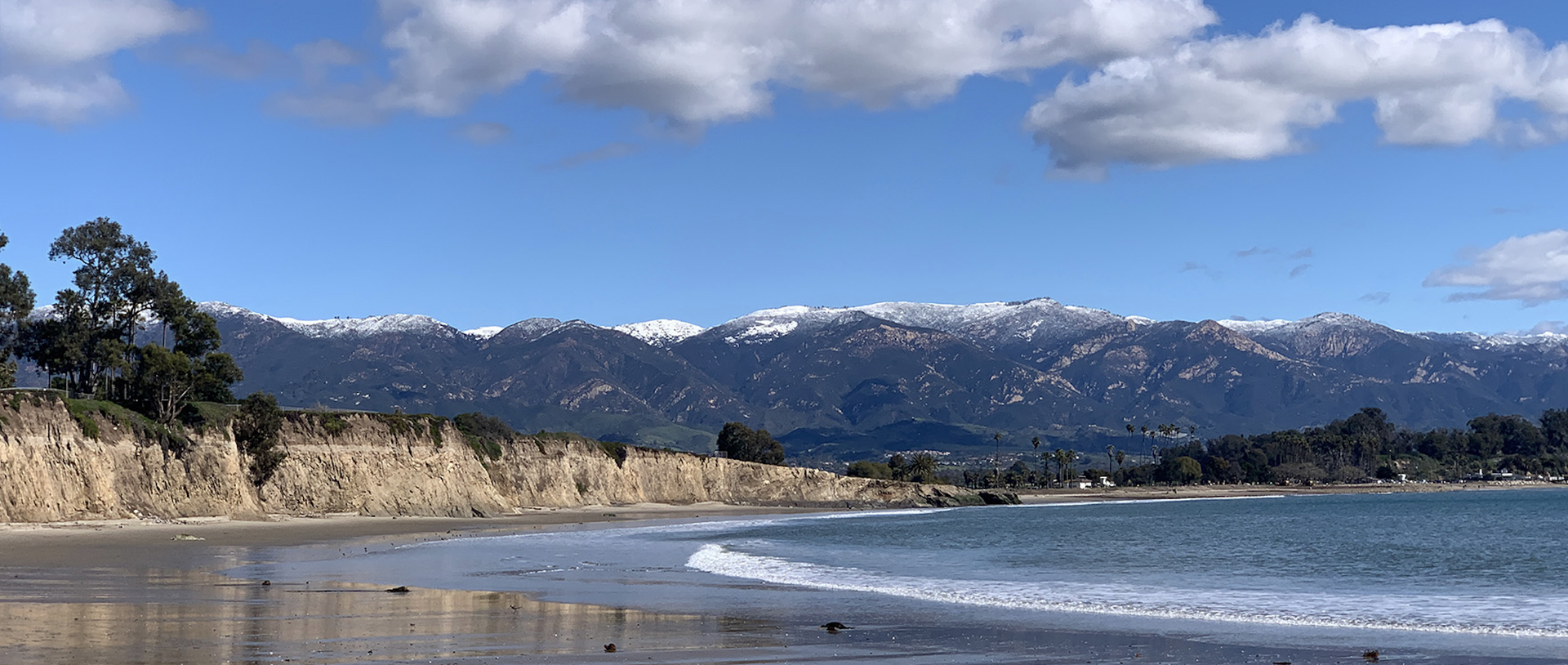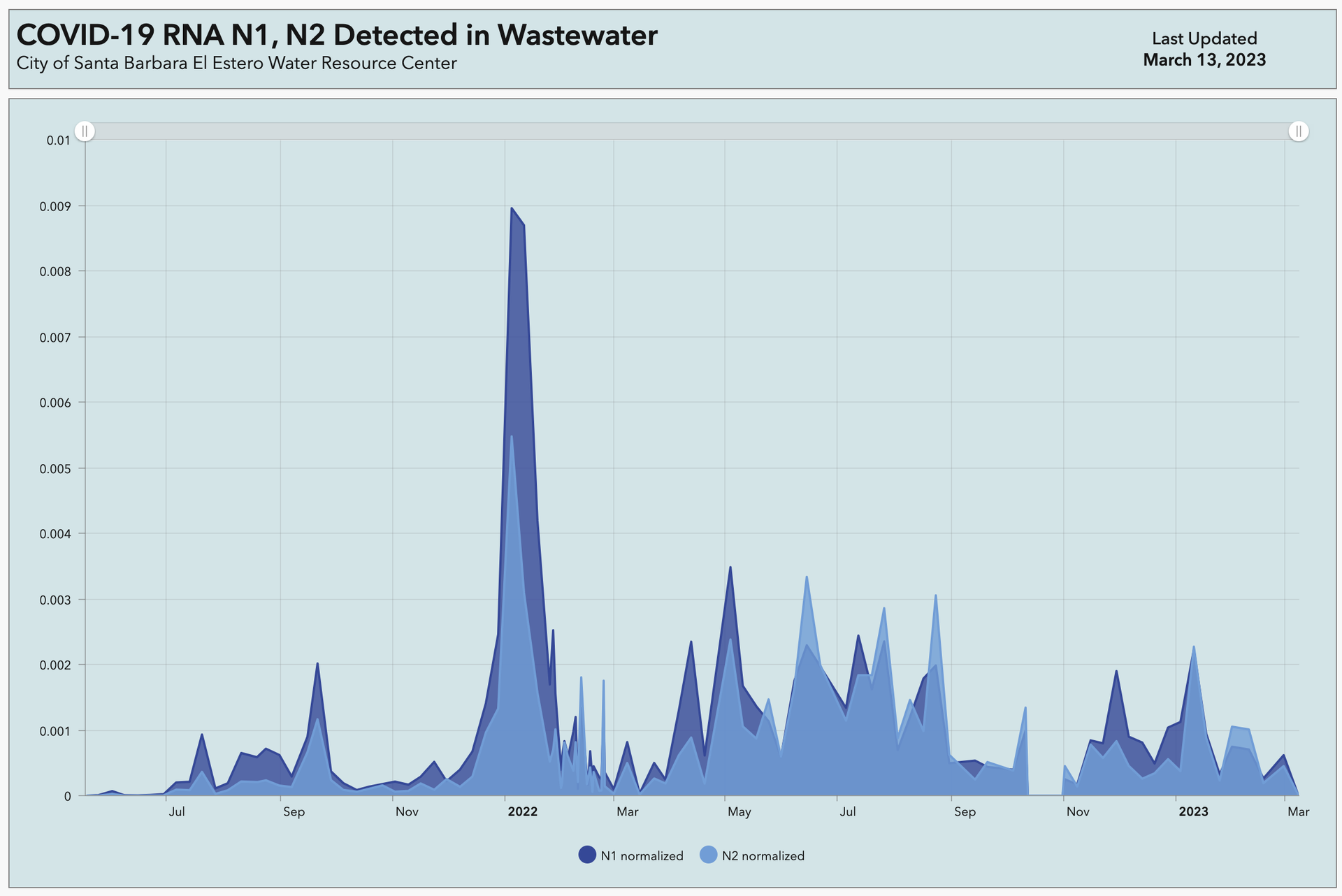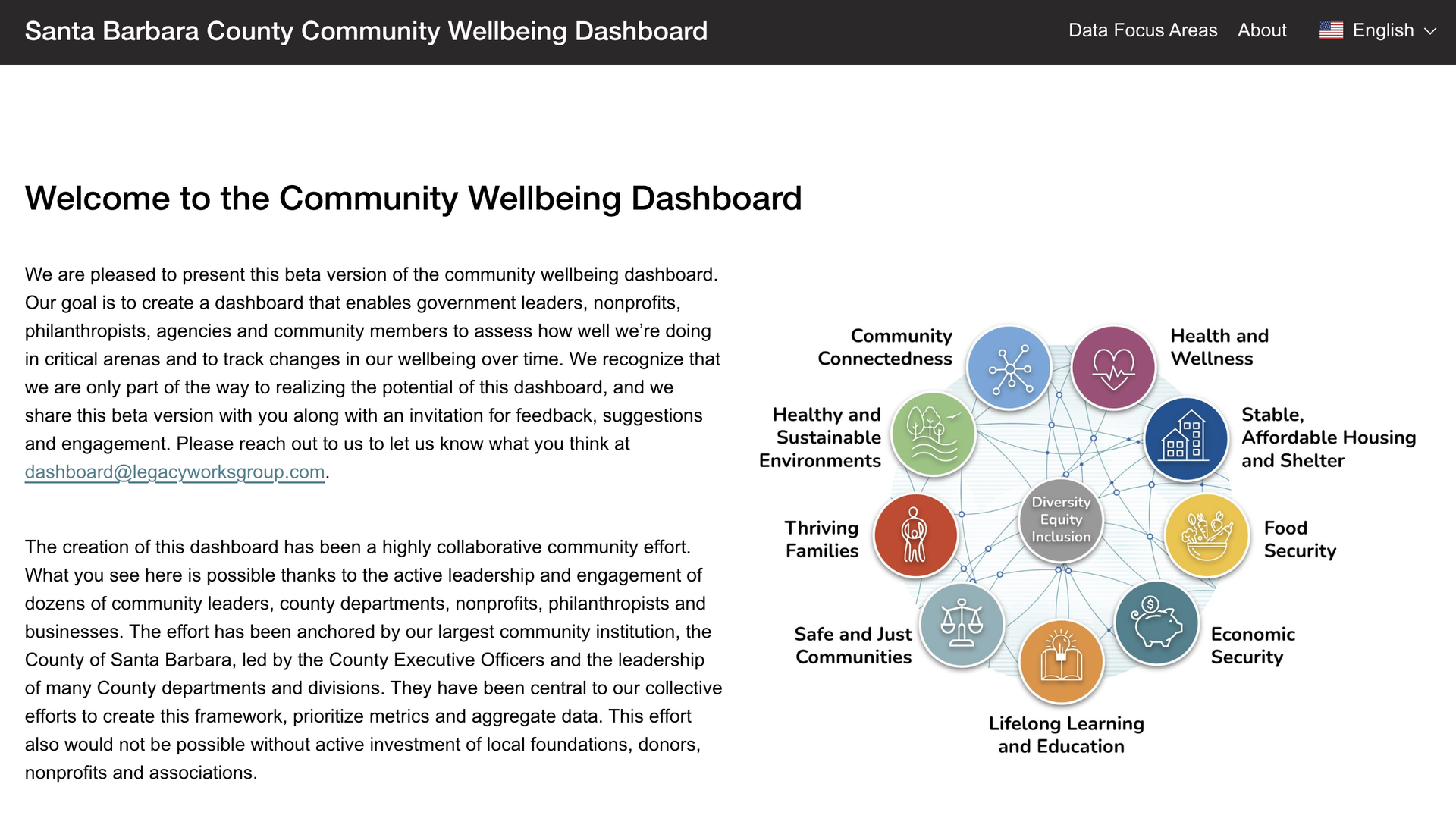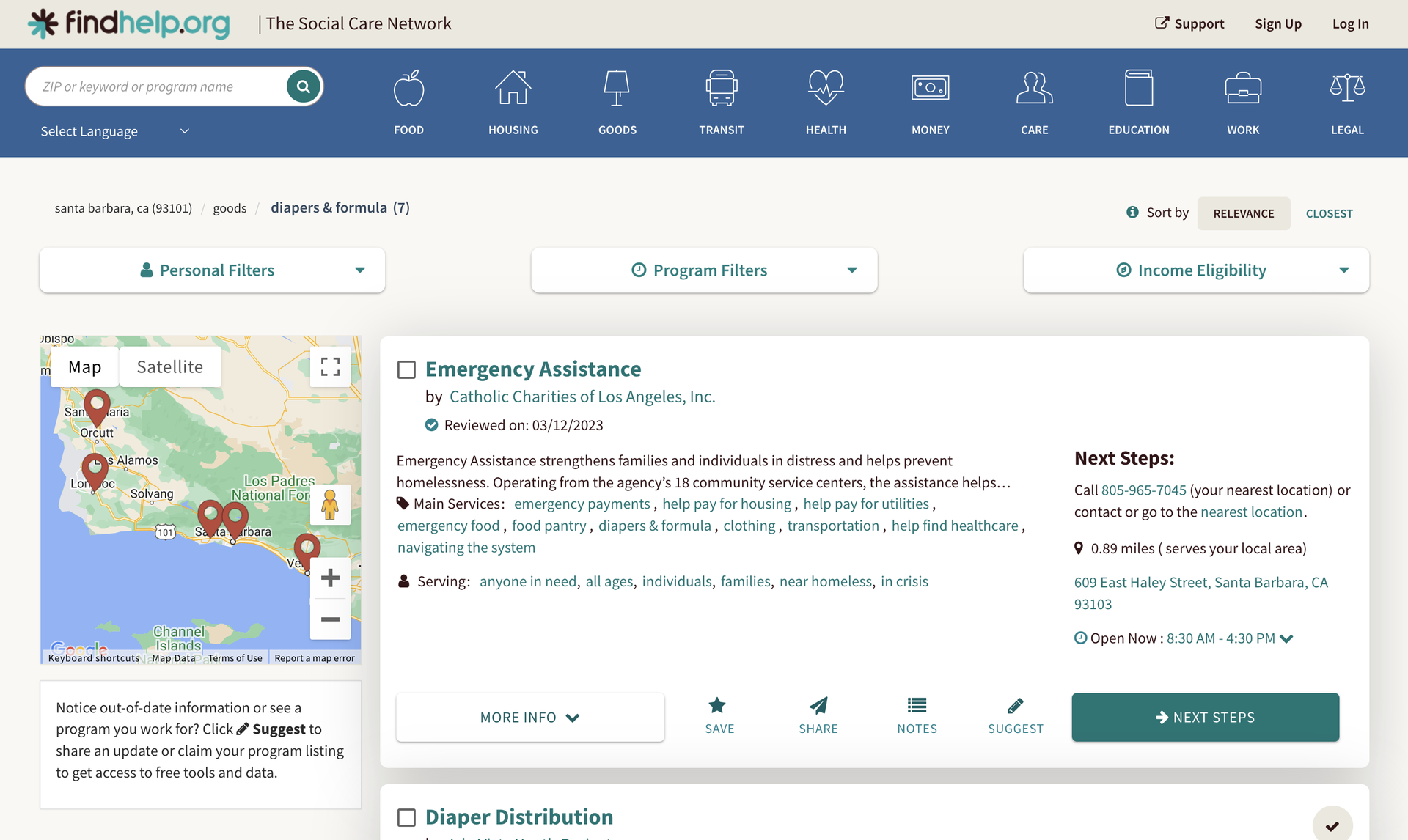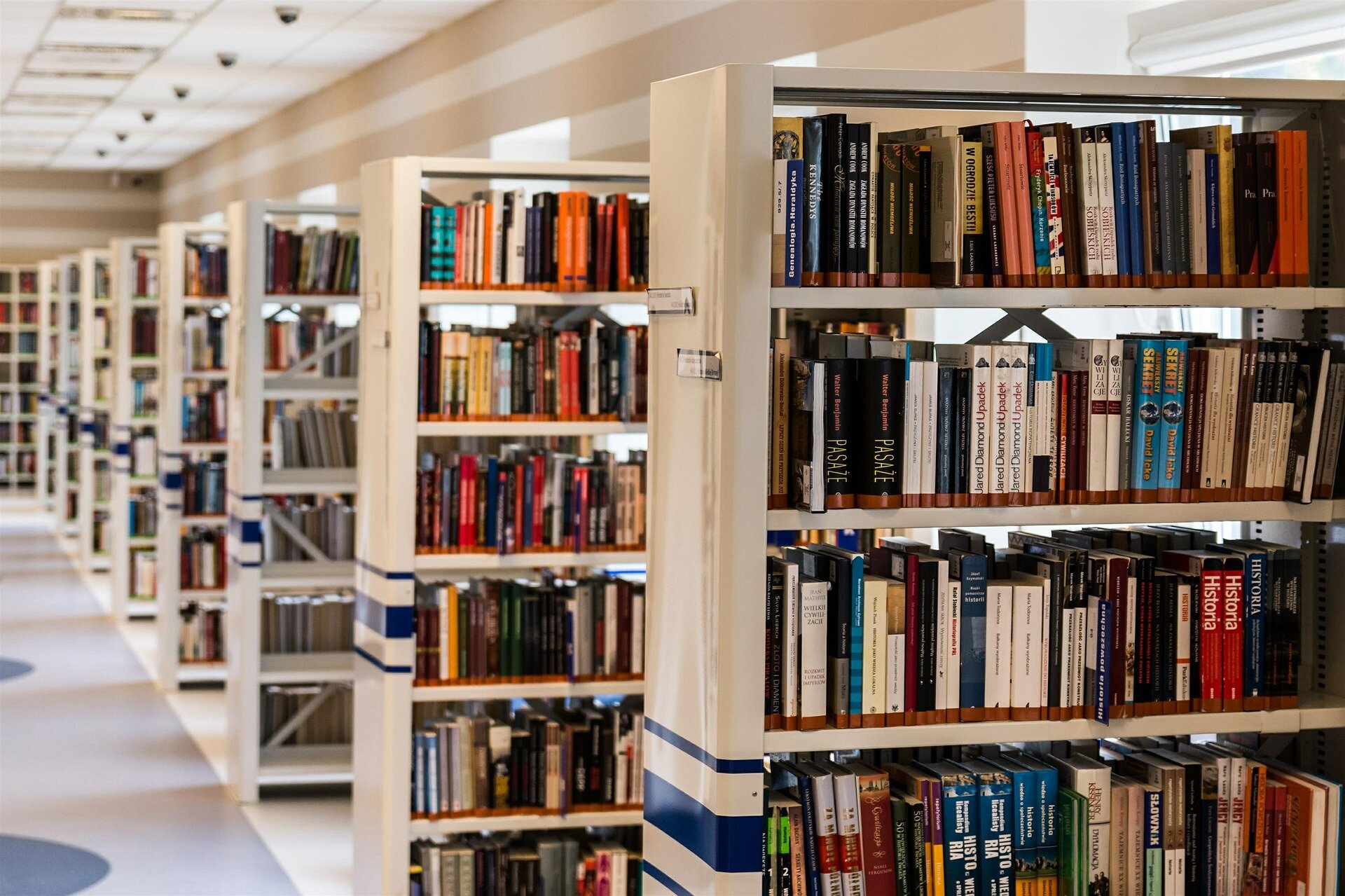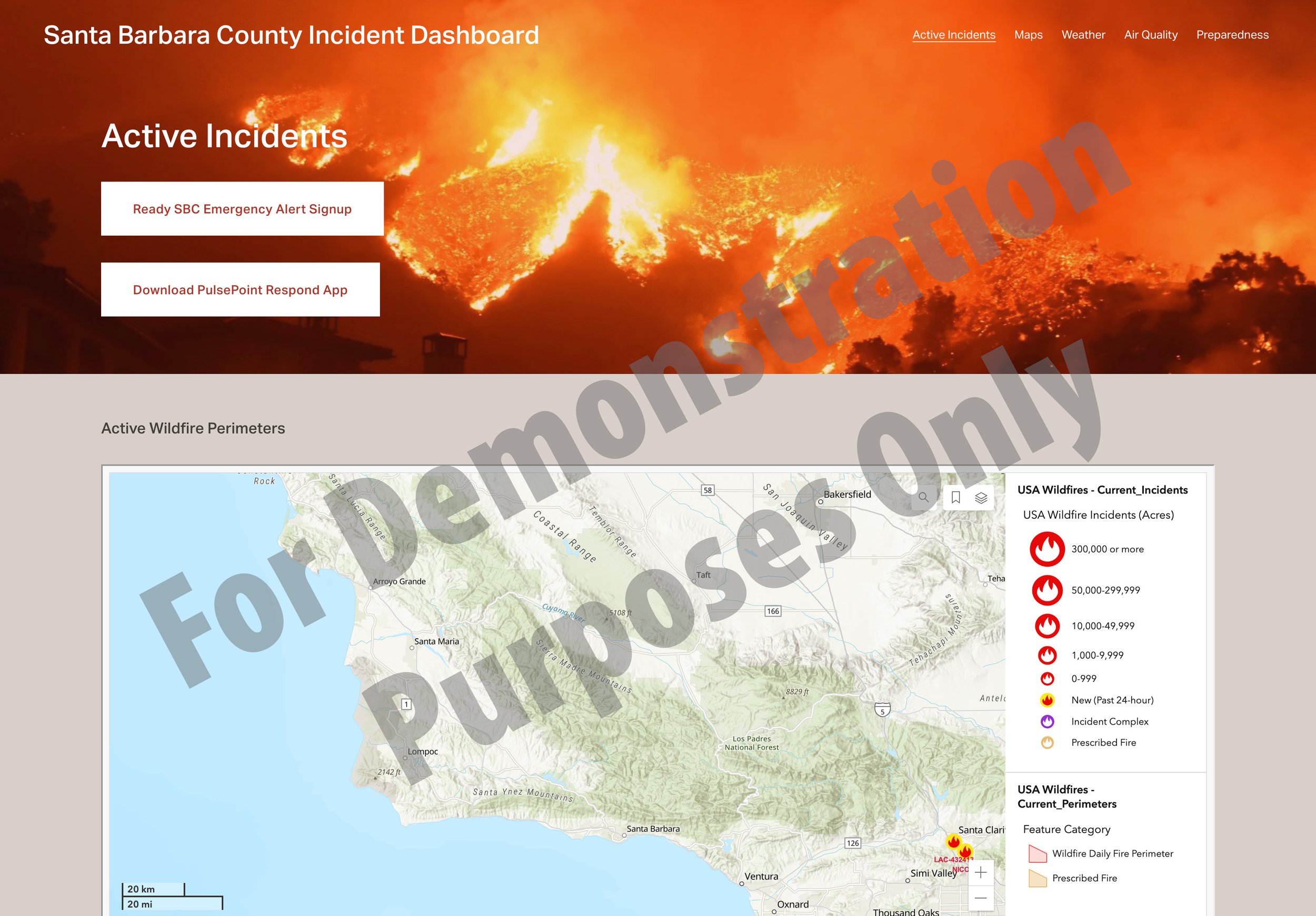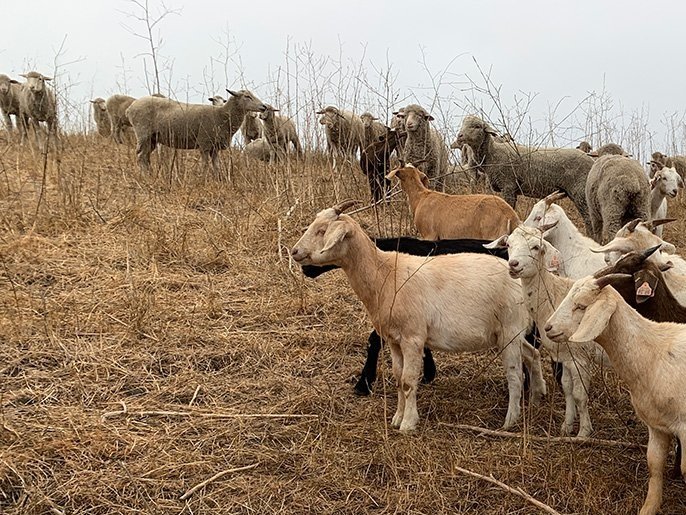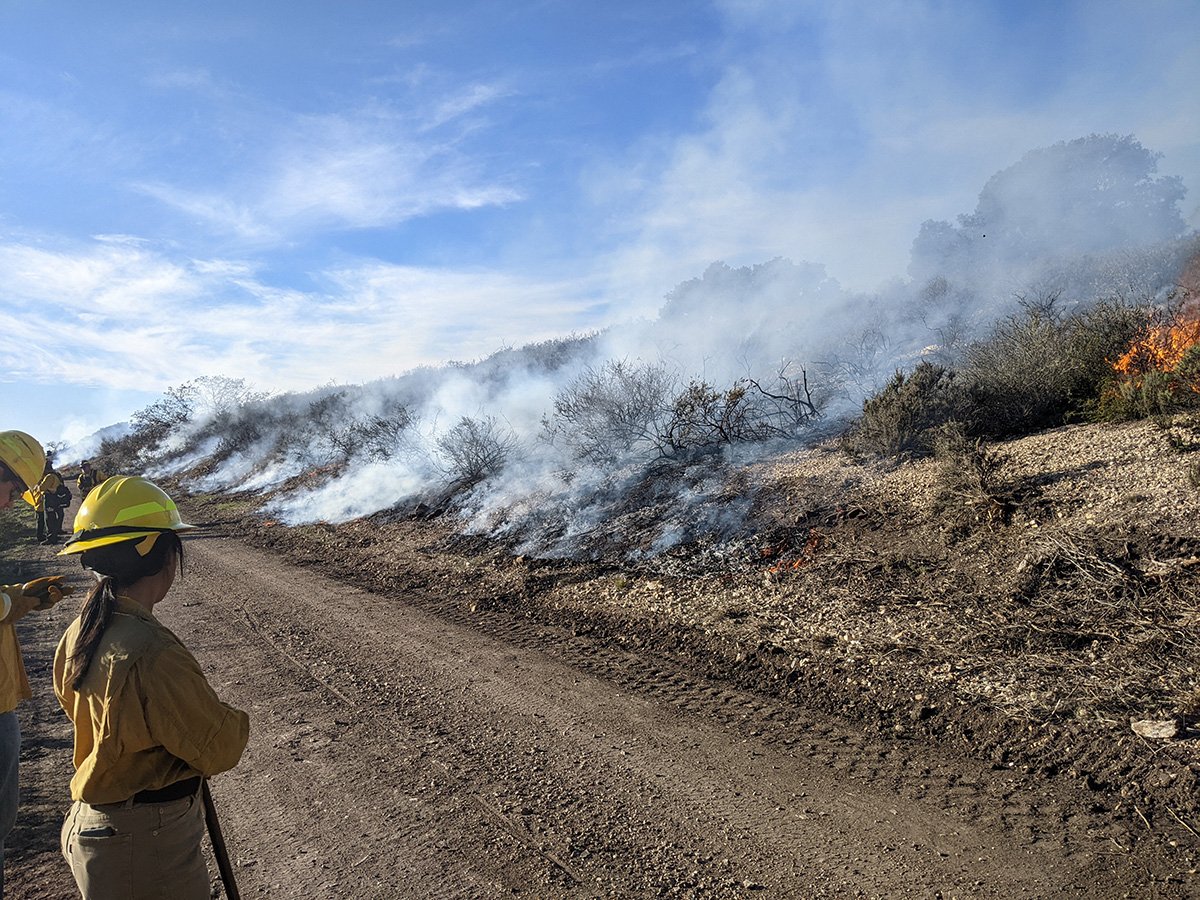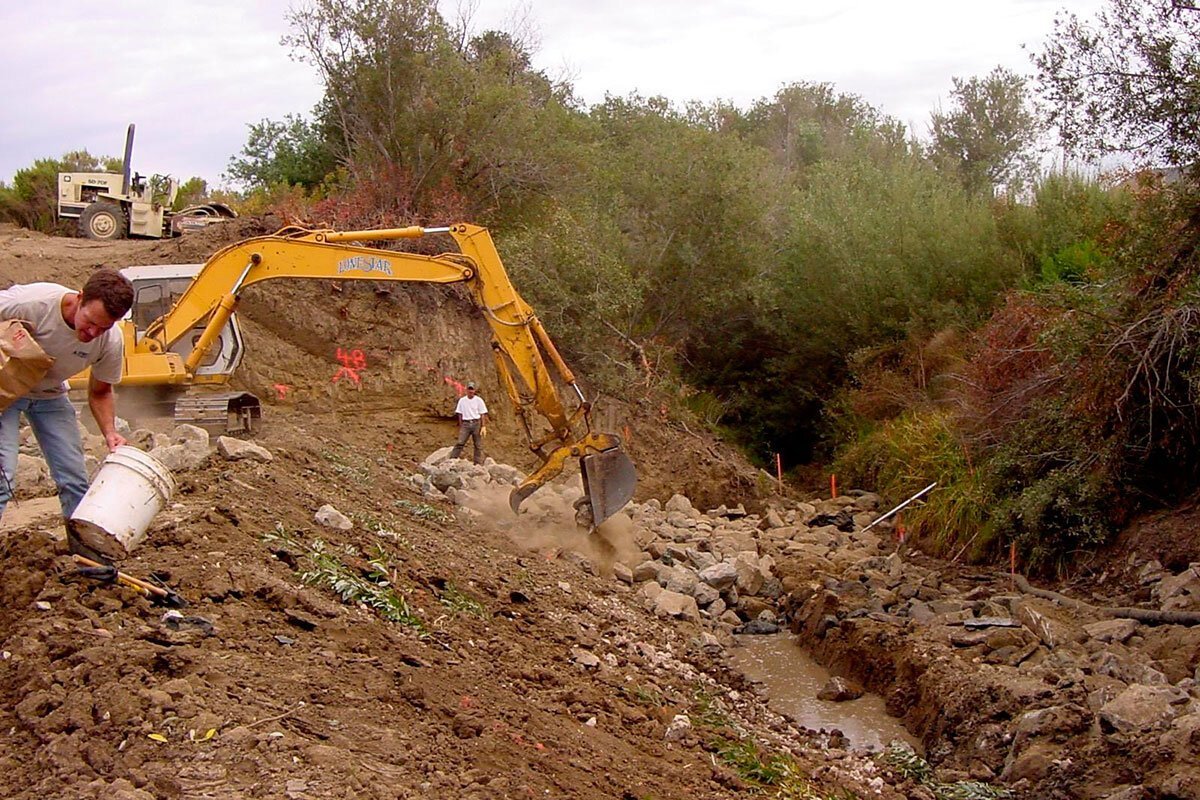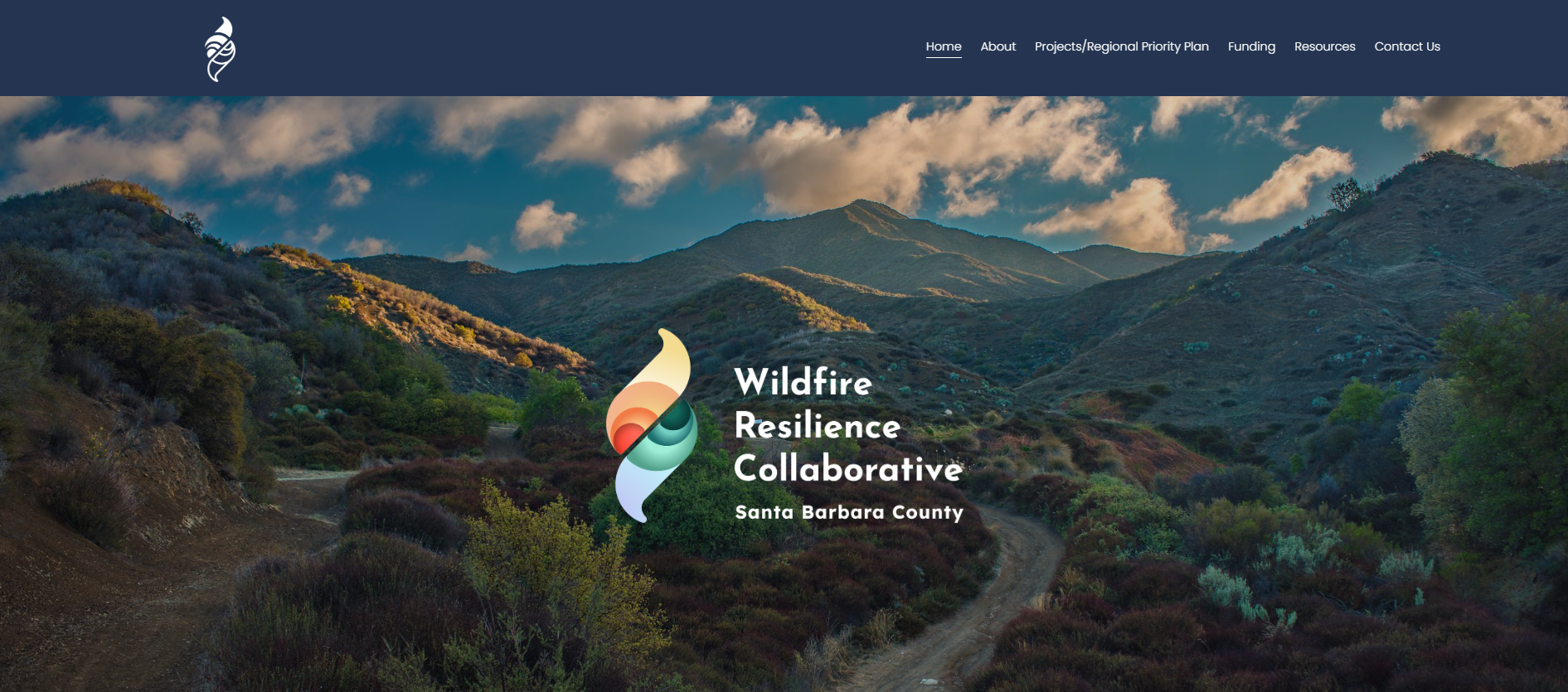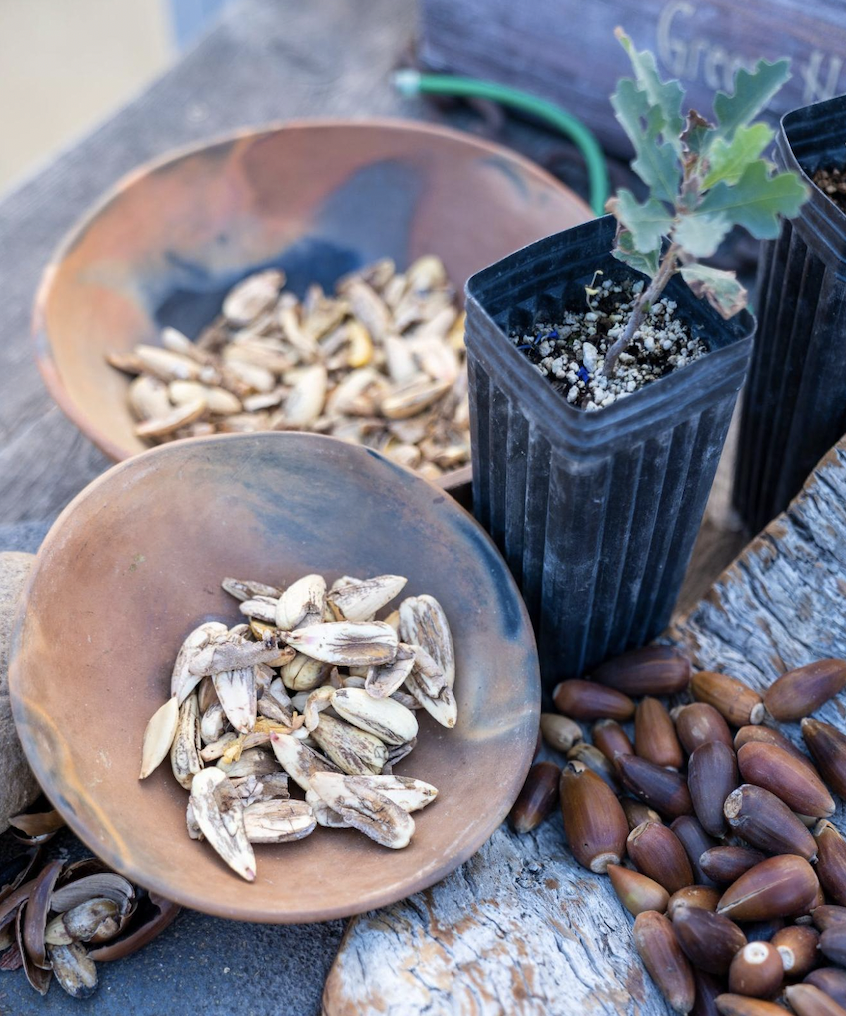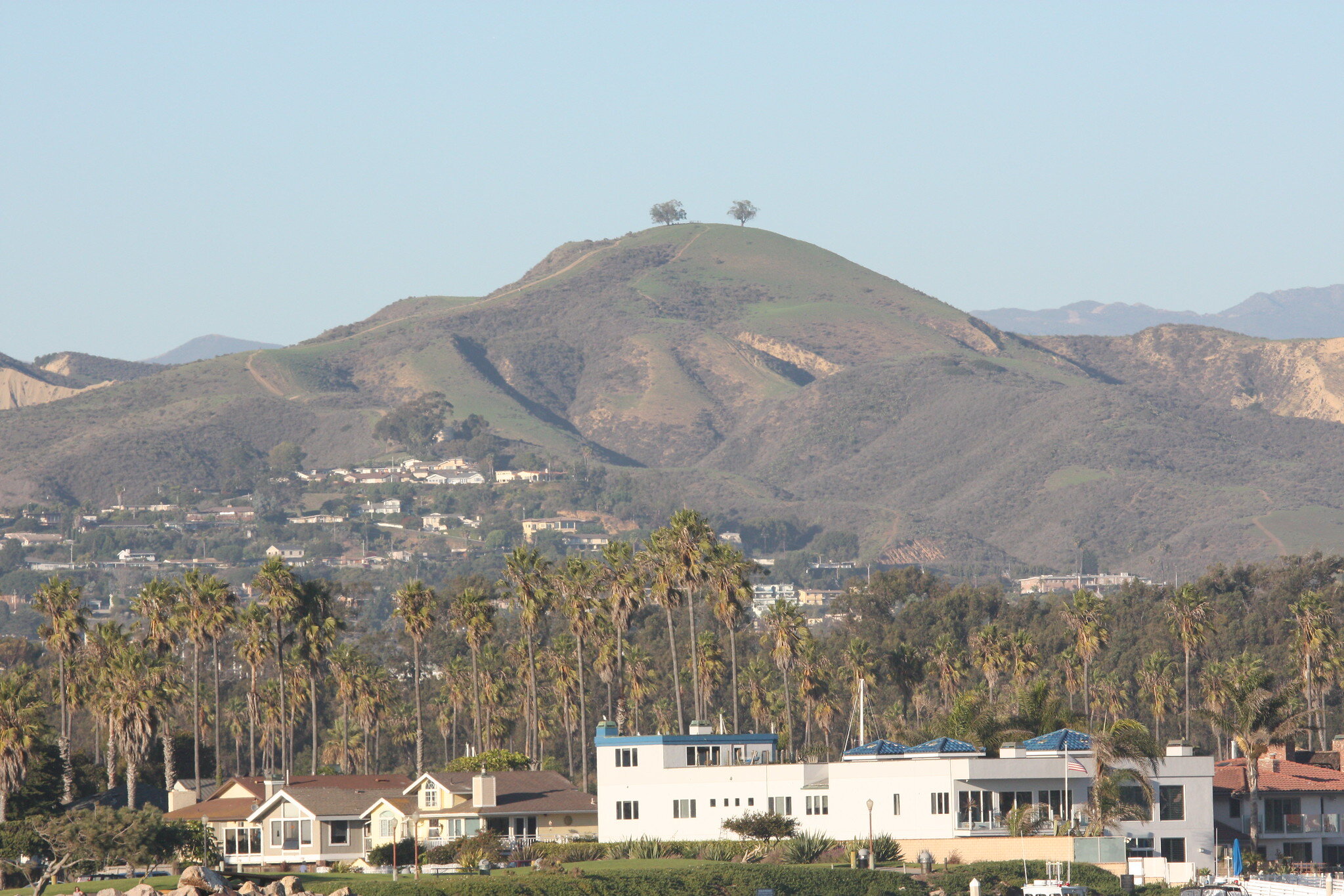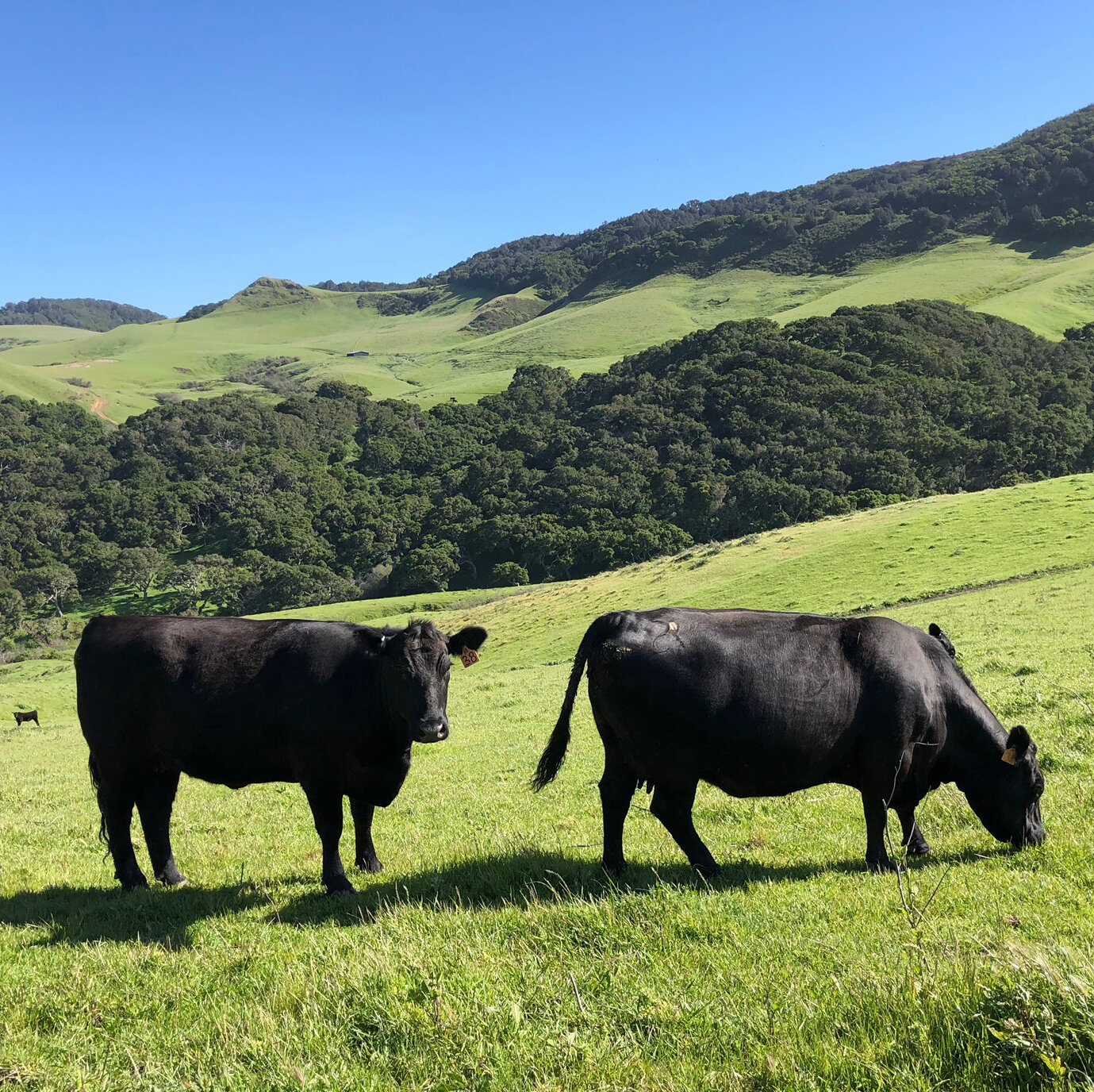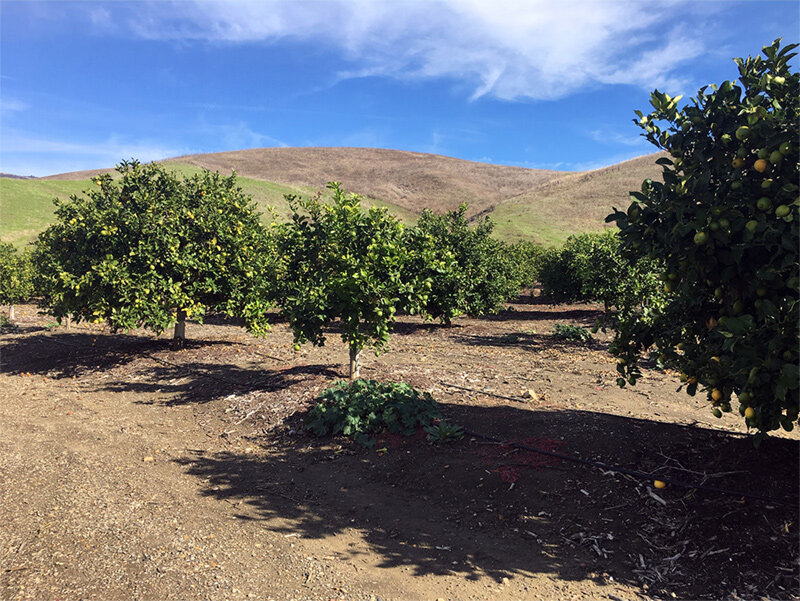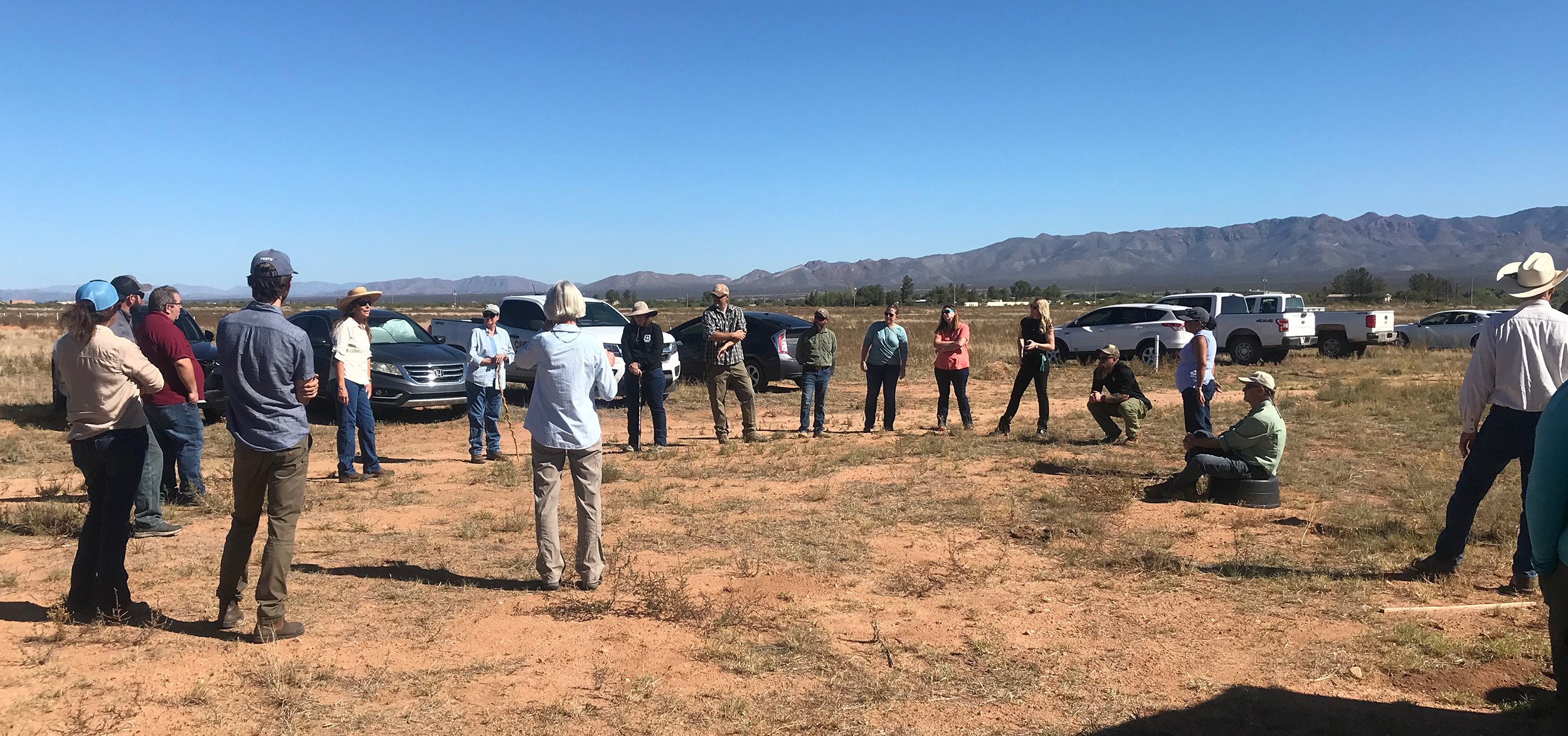
Community Resilience
Community resilience has always been at the heart of our collaborative work, whether we’re advancing a conservation project, a regenerative economic development initiative, or a disaster resilience collaborative. Community resilience is our collective ability to anticipate, address, adapt and – when needed – bounce back from economic crises, pandemics, natural disasters and all the challenges we face. Community resilience requires a deep commitment to equity and building capacity.
Community Resilience Projects and Insights
The Santa Barbara County Community Dashboard is a community-led, online platform designed to provide a comprehensive view of key indicators impacting the wellbeing of Santa Barbara County.
Late in 2021 LegacyWorks Group began connecting with local groups in the Lompoc community to understand challenges, needs, strengths and opportunities.
Cody Heart Mountain, a historically significant landmark in northwest Wyoming, holds cultural and historical importance to various communities, including the Crow tribe, who consider it sacred, and the Japanese-Americans interned at its base during World War II. LegacyWorks is working with Crow tribal...
Our Teton Community Wellbeing Dashboard is a community-driven platform that tracks key indicators of wellbeing, connects residents to local services, and helps leaders make data-informed decisions to improve quality of life in Teton County.
This is the project that launched LegacyWorks, and its ever-expanding impact is a testament to the power of well-facilitated collaborative efforts among committed local partners. Since the collaborative’s 2014 launch through a grant from the LOR Foundation, work has centered around protecting …
Following the tragic death of Marlon Brumfield and other youth in Lompoc in 2018, Yasmin Dawson and Cozy Blow co-founded Collective Cultures Creating Change (C4) Lompoc as a non-profit organization committed to reducing violence, improving outcomes for youth and catalyzing systemic change in Lompoc.
Since early 2022, LegacyWorks Group has been playing a central role in the evolution of Catch Together, a nonprofit program helping small-scale fishermen and heritage fishing communities ensure they retain access and continue to steward and conserve their local fisheries.
Sentinel Landscapes are federally designated priority areas that contain high priority lands for multiple federal and state agencies along with military installations of national importance to the Department of Defense. LegacyWorks Group is supporting the evolution of the program at the national and local levels to better enable each Sentinel Landscape Partnership to set and achieve highly ambitious, landscape scale conservation, community and disaster resilience goals.
Ellwood Mesa is an important node in a connected mosaic of protected lands in Goleta. It is also one of the most important overwintering sites for the western population of monarch butterflies. Monarch populations are declining globally, and the overwintering population at Ellwood has declined as well, raising alarm bells in the community.
The City of Goleta’s Parks and Open Space Division invited LegacyWorks Group to help them unveil their efforts to restore the monarch butterfly habitat at Ellwood Mesa.
Community resilience is our collective capacity to endure, respond and recover from adversity. Resilience allows us to adapt and grow after a disaster, whether a pandemic, flood or wildfire. At LegacyWorks, we work to build community resilience every day as we show up in service of emerging community needs.
During 2020-2021, LegacyWorks partnered with Santa Barbara County to develop the Community Data Dashboard to provide residents and leaders with timely access to trustworthy data on COVID-19. In 2022 our partnership expanded COVID-19 monitoring and reporting through implementing wastewater surveillance.
Last year we partnered with the Santa Barbara County CEO’s Office and six County departments to develop and launch a Community Wellbeing Dashboard that reports on an array of metrics across nine key focus areas. Together we developed a community wellbeing framework that allows us to identify and report on key factors that contribute to community wellness, creating a tool to inform decision making and track progress over time.
Resilient Santa Barbara County (SBC) is a countywide network dedicated to preventing and reducing the impacts of Adverse Childhood Experiences (ACEs) in Santa Barbara County. It is overseen by the ACEs Steering Committee, a group of volunteers who are shaping the vision, purpose, principles and objectives of this emerging network.
The LegacyWorks team worked alongside Cottage Health to help provide support for community organizations to implement FindHelp. FindHelp is the platform chosen by the Network of Care to implement a standardized referral system and resource directory throughout the county social sector.
The Santa Barbara County Library Ad Hoc Committee was established by the Board of Supervisors to find a sustainable and equitable model for county libraries. Members of the committee include two County Supervisors, four Library Directors, one member of a library Friends group, one Library Advisory Committee member, and the Director of the County Community Services Department.
Wildfire affects every person and every sector in our community; the scale and complexity of this problem requires every one of us to take action to advance our region’s resilience. We must learn to adapt and develop new strategies for learning and working together.
In consultation with diverse stakeholder groups, including Santa Barbara County Fire and community stakeholders, the LegacyWorks team developed a Wildfire Incident Dashboard prototype.
Prescribed herbivory and grazing is a unique tool that can reduce fire fuels, create mosaics of open space in thick brush, reduce invasive species, improve soils and native habitat, and reduce the risk of high-severity fires.
Indigenous people traditionally used low intensity fire to shape landscapes, ensure the abundance of culturally important plants, create clearings for wildlife and open understories for access to foraging areas. Today, Good Fire has functionally been removed from our landscape due to the loss of cultural burning traditions combined with more than 100 years of aggressive fire suppression.
The Goleta Riparian Corridor Wildfire Risk Reduction & Restoration Project was funded by a California Coastal Conservancy Grant and builds on initial planning work by the Environmental Defense Center that identified wildfire risks and restoration opportunities in numerous sites within twelve watersheds.
Santa Barbara is rich in natural communities that are specifically adapted to its Mediterranean weather patterns. These include coastal scrub, chaparral and foothill woodland plant communities, some of the world's most imperiled ecosystems.
Since our last letter to you, December rains have rejuvenated the hillsides and provided a brief respite from the concern of wildfires. Yet with such a dry, hot January and February and the continuing drought, we’re rapidly headed into a long season of very high fire risk. The question of how we learn to live with this new wildfire regime is at the forefront of our minds.
The Teton Creek Collaborative (TCC), a partnership that includes the Teton Regional Land Trust, Friends of the Teton River, Valley Advocates for Responsible Development, Teton Valley Trails and Pathways, and LegacyWorks Group achieved an important milestone…
True to our mission to help organizations collaborate on critical challenges that no single agency can tackle on their own, LegacyWorks Santa Barbara facilitated a public-private partnership and launched a countywide COVID-19 Data Dashboard.
For over two decades, almost as long as Cabo Pulmo National Park has existed, I have had the privilege of visiting and working with the community of Cabo Pulmo in Southern Baja California, Mexico, first with international conservation organizations like the World Wildlife Fund, then as a concerned citizen, and now with LegacyWorks Group.
By now many of us have been exposed to the disaster cycle as it unfolds after a disaster strikes. The cycle takes us from the event itself to immediate search and rescue and early risk mitigation and relief work, into a sustained response through the first days and weeks…
In late 2019, the Ventura Land Trust had an opportunity to purchase Mariana Rancho, an iconic hillside property overlooking the city of Ventura. LegacyWorks helped the Land Trust develop a short-term finance strategy and a longer-term fundraising plan.
LegacyWorks supported White Buffalo Land Trust’s campaign to acquire the Jalama Canyon Ranch. Together we worked to understand and articulate the vision, purpose, principles and goals of the White Buffalo Jalama Ranch Project.
In partnership with the Cachuma Resources Conservation District, LegacyWorks helps owners of working lands to plan and implement regenerative agricultural and grazing management practices to increase the rate at which carbon is captured and reduce the rate at which it is lost or emitted.

